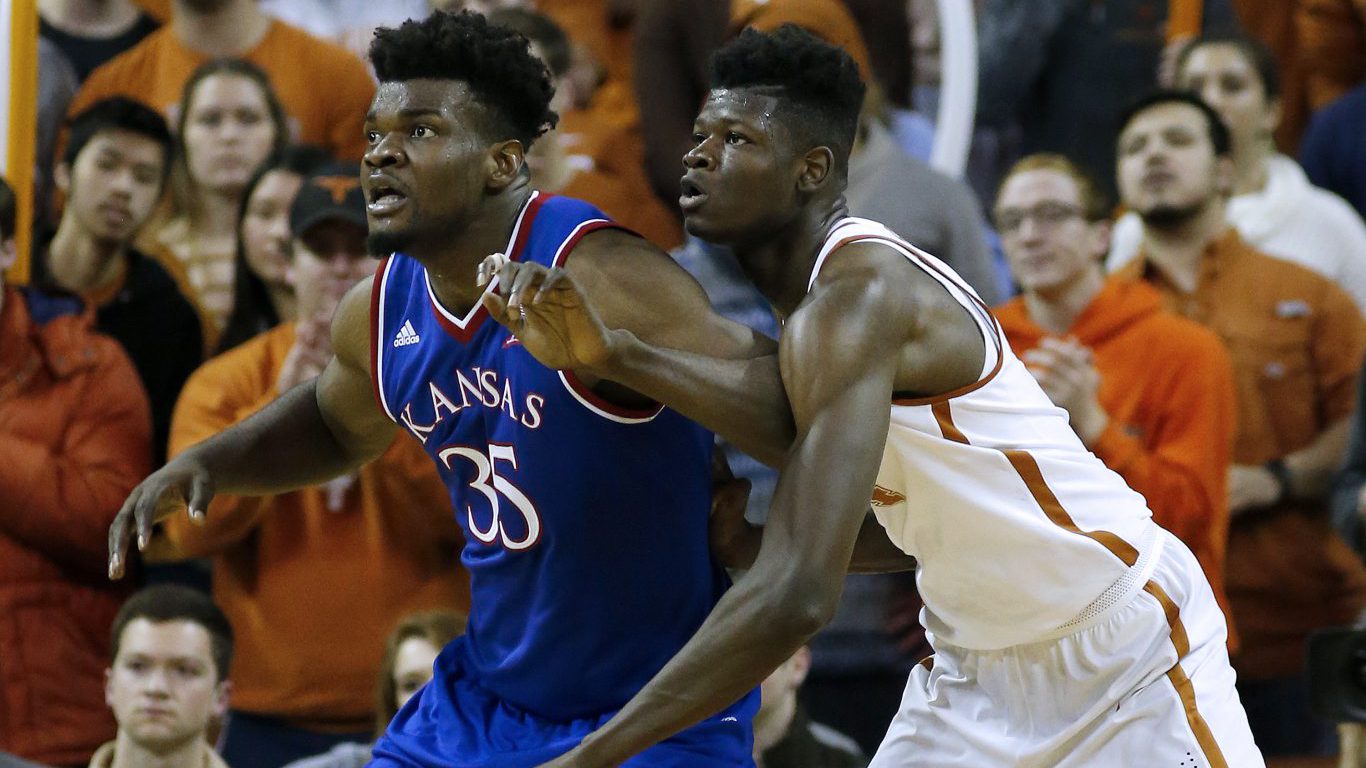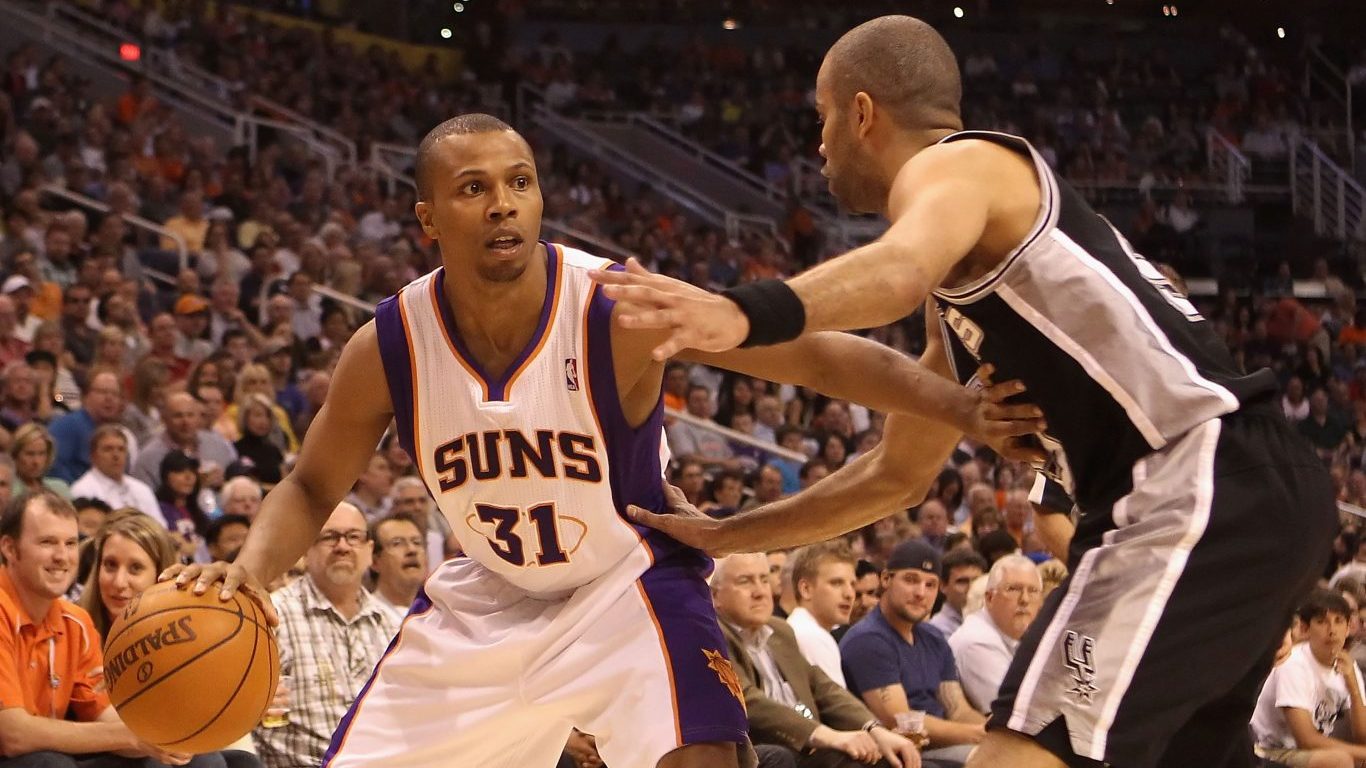
With a seemingly endless stream of new, young players coming to the professional ranks from college and from overseas, athletes in the NFL, NBA, NHL, and MLB must always perform well on gameday if they want to hold onto their jobs.
However, throughout the history of these leagues, some players have remained professional athletes despite putting up lackluster statistics. This could be for a few reasons, including filling a specific positional role that does not have much competition, or coaches liking their leadership and character in the locker room.
To determine the worst athletes with the longest careers, 24/7 Tempo reviewed data from the Sports Reference family of sites on veteran players in the NFL, NHL, MLB, and NBA who played hundreds of games with the lowest overall contribution to their teams’ success.
Though these athletes were never statistically impressive, they managed to stay on a professional roster — an accomplishment in and of itself. Many of the players on this list are journeymen — players that hop from team to team, trying to stay on an active roster any way they can.
These players may not be huge contributors to their team, but most franchises have some bottom of the roster players that do little to contribute to overall success. Where teams really get in trouble is when highly-paid athletes struggle to live up to the multimillion dollar contract they signed, leaving their team with little extra money to sign other players. These are the most overpaid players in pro sports.
Click here to see the worst athletes with the longest careers.
Click here to see our detailed findings and methodology.
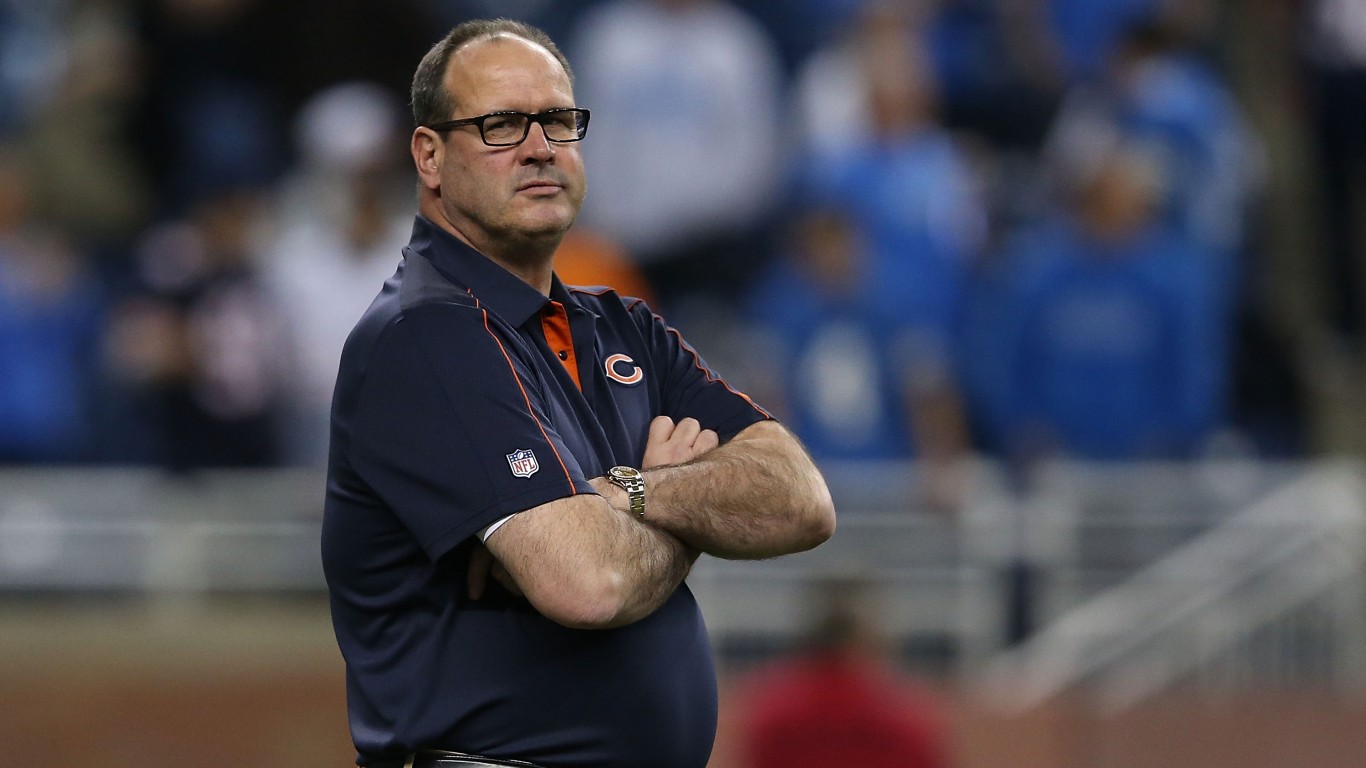
20. Mike Tice
> Career: 1981-1995
> Position, team(s): Tight end: Seattle Seahawks, Minnesota Vikings
> League: NFL
Mike Tice played 14 seasons in the NFL, from 1981-1995, spending a decade in Seattle with the Seahawks as well as stints with Minnesota and Washington. Tice averaged just 64 yards per season throughout his 14-season career, hauling in just 11 total touchdowns in his career. Tice would go on to be the head coach of the Minnesota Vikings from 2001-2005, making one playoff appearance.
[in-text-ad]
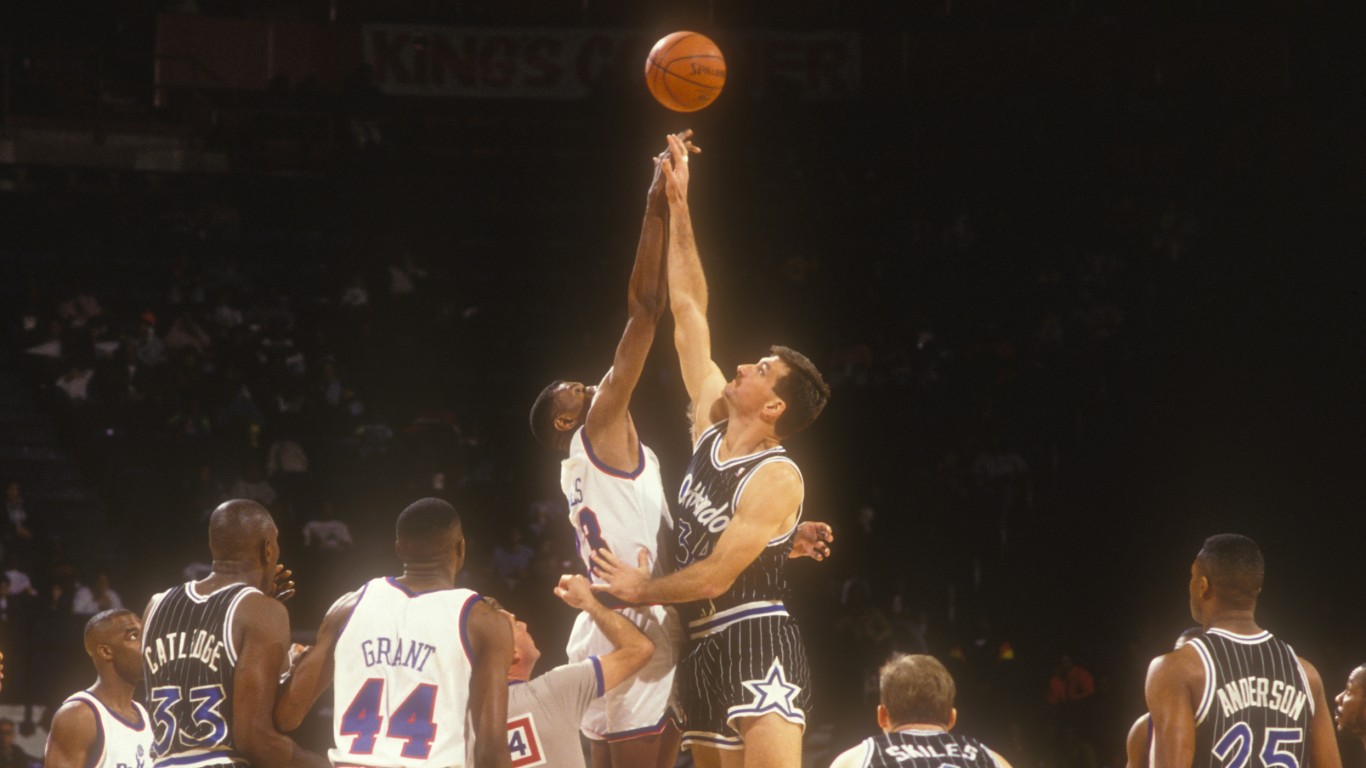
19. Greg Kite
> Career: 1984-1995
> Position, team(s): Center: Boston Celtics, Orlando Magic
> League: NBA
After being drafted 21st overall in the 1983 NBA Draft, center Greg Kite played for seven NBA teams in a dozen seasons, including the Orlando Magic and Boston Celtics. In Boston, he was a member of the 1984 and 1986 NBA championship teams, though he played sparingly on those teams.
In his career, Kite averaged just 2.5 points and 3.8 rebounds per game and shot just 43.9% from the field, even though centers typically shoot much higher. Even in his best season, 1990-1991, Kite averaged just 4.8 points and 7.2 rebounds for the Orlando Magic — despite starting all 82 games and playing 27 minutes per game.
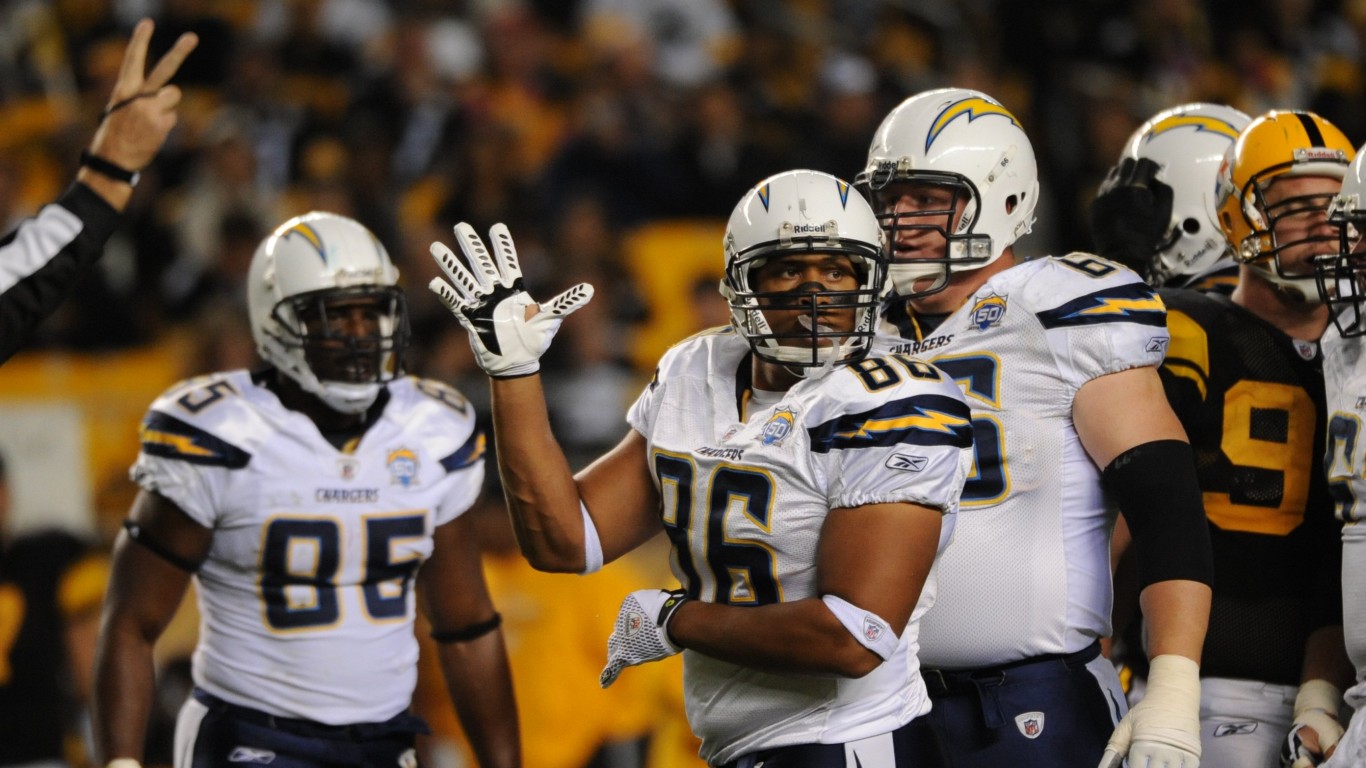
18. Brandon Manumaleuna
> Career: 2001-2010
> Position, team(s): Tight end: St. Louis Rams, San Diego Chargers, Chicago Bears
> League: NFL
Brandon Manumaleuna played tight end in the NFL for a decade, suiting up for the St. Louis Rams, San Diego Chargers, and Chicago Bears. Manumaleuna barely eclipsed 1,000 total receiving yards in his 10-year career. His most productive season came in 2003 with the Rams, when he recorded 238 receiving yards and two touchdowns.
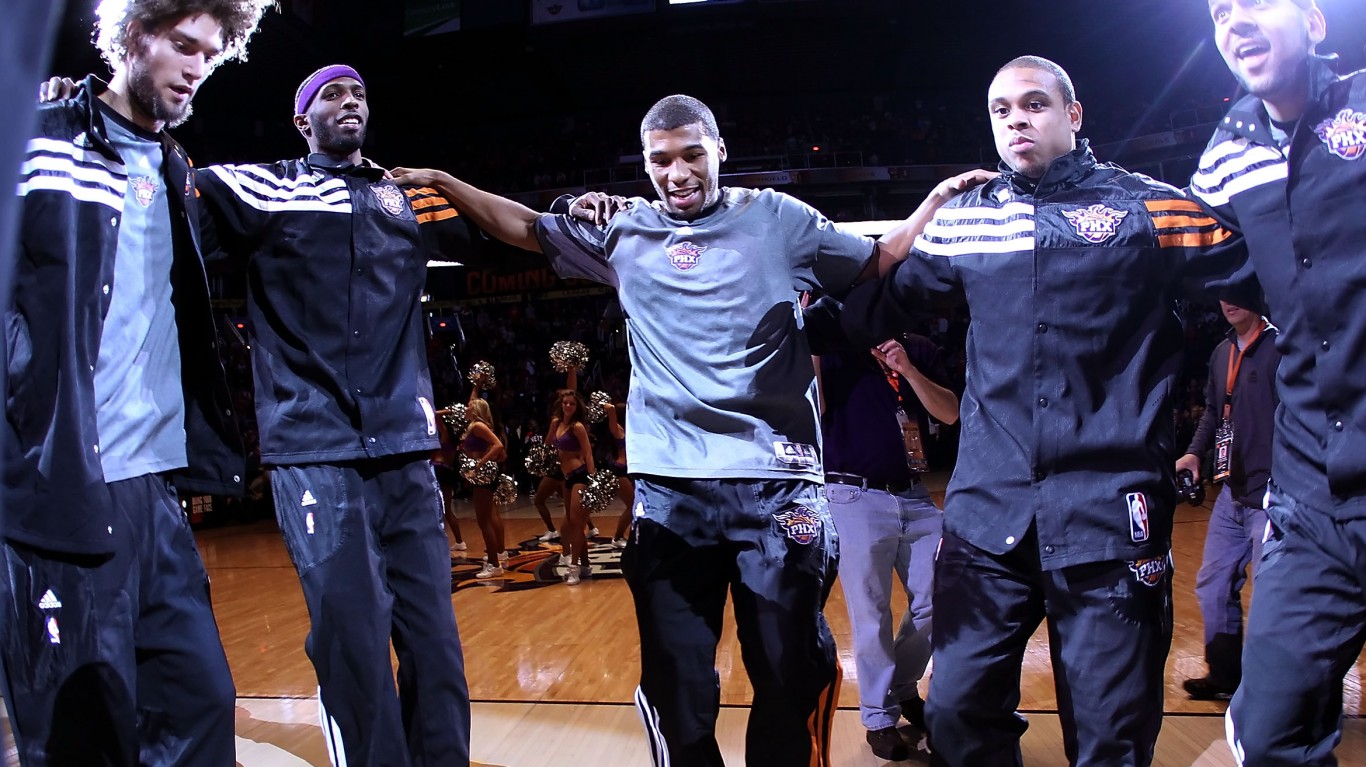
17. Ronnie Price
> Career: 2006-2017
> Position, team(s): Point guard: Utah Jazz, Phoenix Suns, Sacramento Kings
> League: NBA
Over his 12 seasons in the NBA, Ronnie Price played in 544 games for six different franchises, including the Utah Jazz, Phoenix Suns, and Sacramento Kings. Serving as a reserve point guard, Price averaged 3.7 points and 1.8 assists per game. For his career, he shot just 37.3% from the field.
[in-text-ad-2]
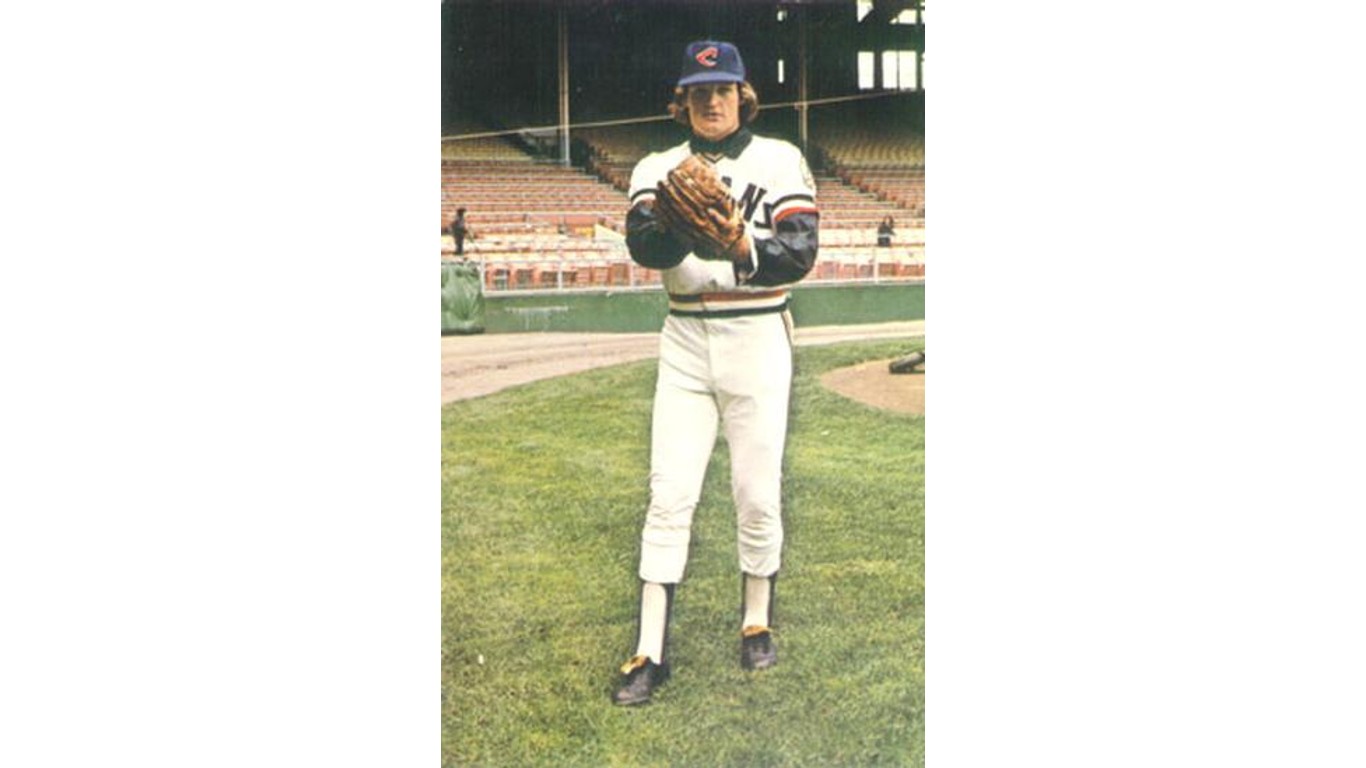
16. Jerry Johnson
> Career: 1968-1977
> Position, team(s): Pitcher: Philadelphia Phillies, San Francisco Giants
> League: MLB
Journeyman pitcher Jerry Johnson played in 365 MLB games in his 10-year career, suiting up for seven different franchises but never staying in one place for even three full seasons. Initially a starter with the Philadelphia Phillies, Johnson struggled and was moved to the bullpen.
He had a strong 1971 season with the San Francisco Giants, with a 2.97 ERA, but struggled after that. In the six seasons he pitched after that, Johnson’s ERA was at 4.42 or higher — often much higher. He retired with a lifetime ERA of 4.31 and a record of 48-51.
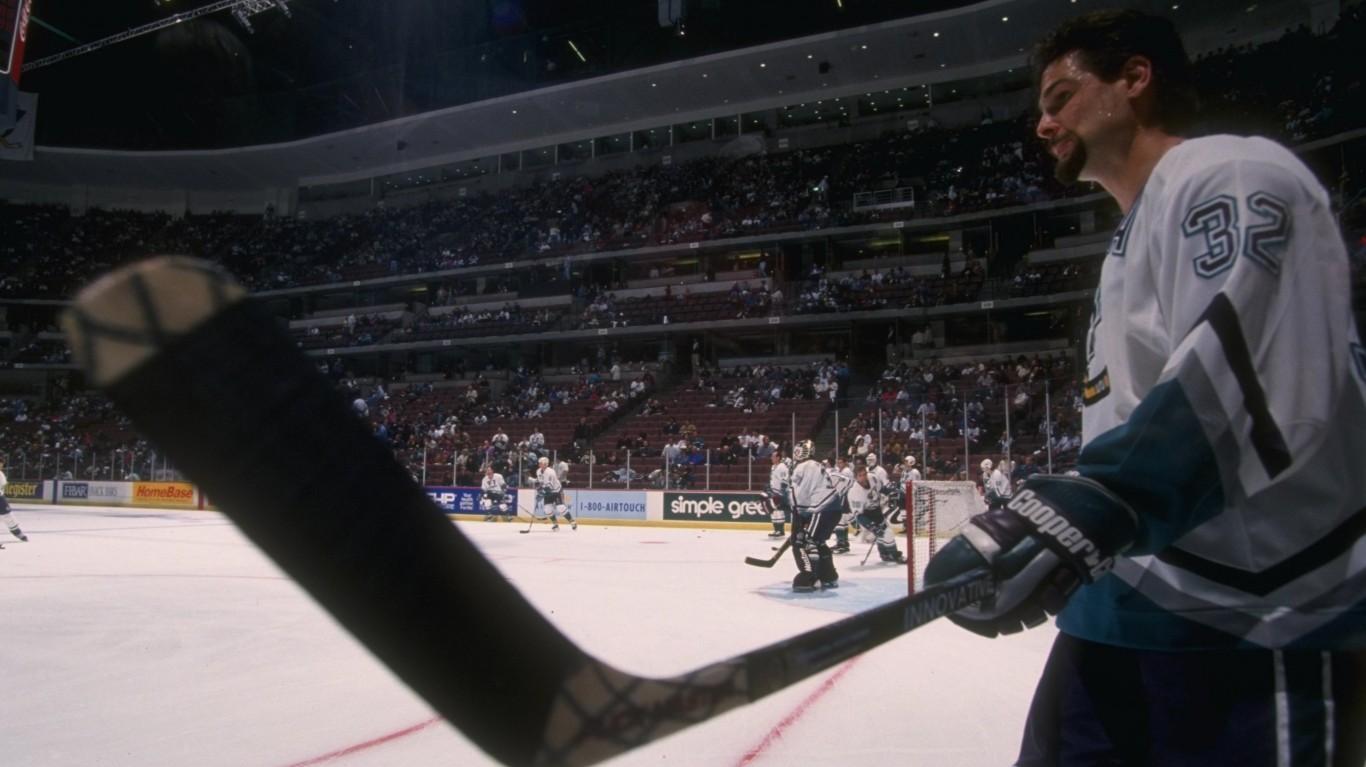
15. Stu Grimson
> Career: 1988-2002
> Position, team(s): Left Winger: Mighty Ducks of Anaheim, Chicago Blackhawks
> League: NHL
Stu Grimson was an NHL left winger for 14 seasons, playing for seven different franchises, including the Mighty Ducks of Anaheim, Chicago Blackhawks, and Detroit Red Wings. Though he played well on defense, Grimson was an offensive liability, recording just 17 goals and 22 assists in 729 career games. He also spent over 2,100 minutes in the penalty box.
[in-text-ad]
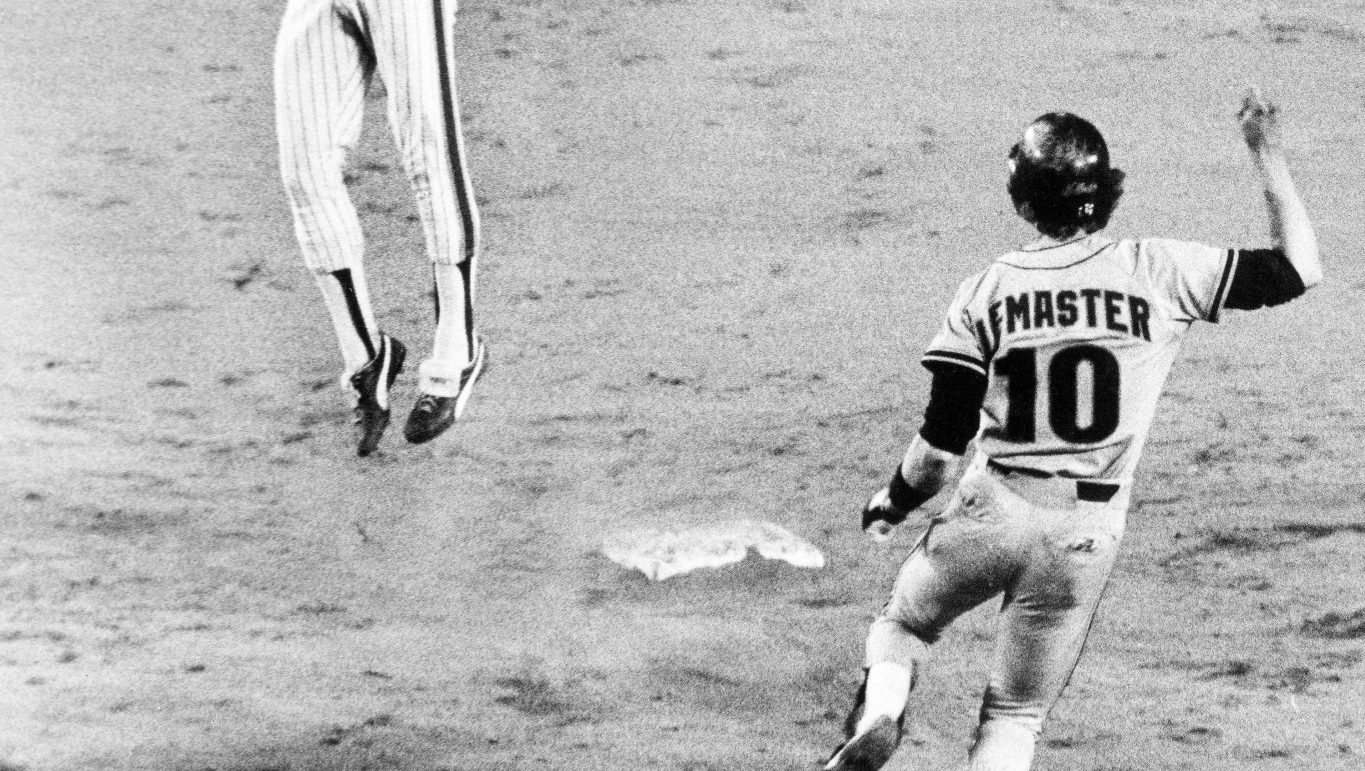
14. Johnnie LeMaster
> Career: 1975-1987
> Position, team(s): Shortstop: San Francisco Giants
> League: MLB
Shortstop Johnnie LeMaster was drafted sixth overall out of high school in 1973 and made it to the big leagues with the San Francisco Giants in 1975 at age 21. LeMaster was a below average defender and batted just .222 for his 12-year career. The light-hitting shortstop had just 22 career home runs in over 1,000 games.
He spent over a decade with the Giants and rounded out his career with brief stints in Cleveland, Oakland, and Pittsburgh — though his batting average never exceeded a paltry .155 in any subsequent stop.
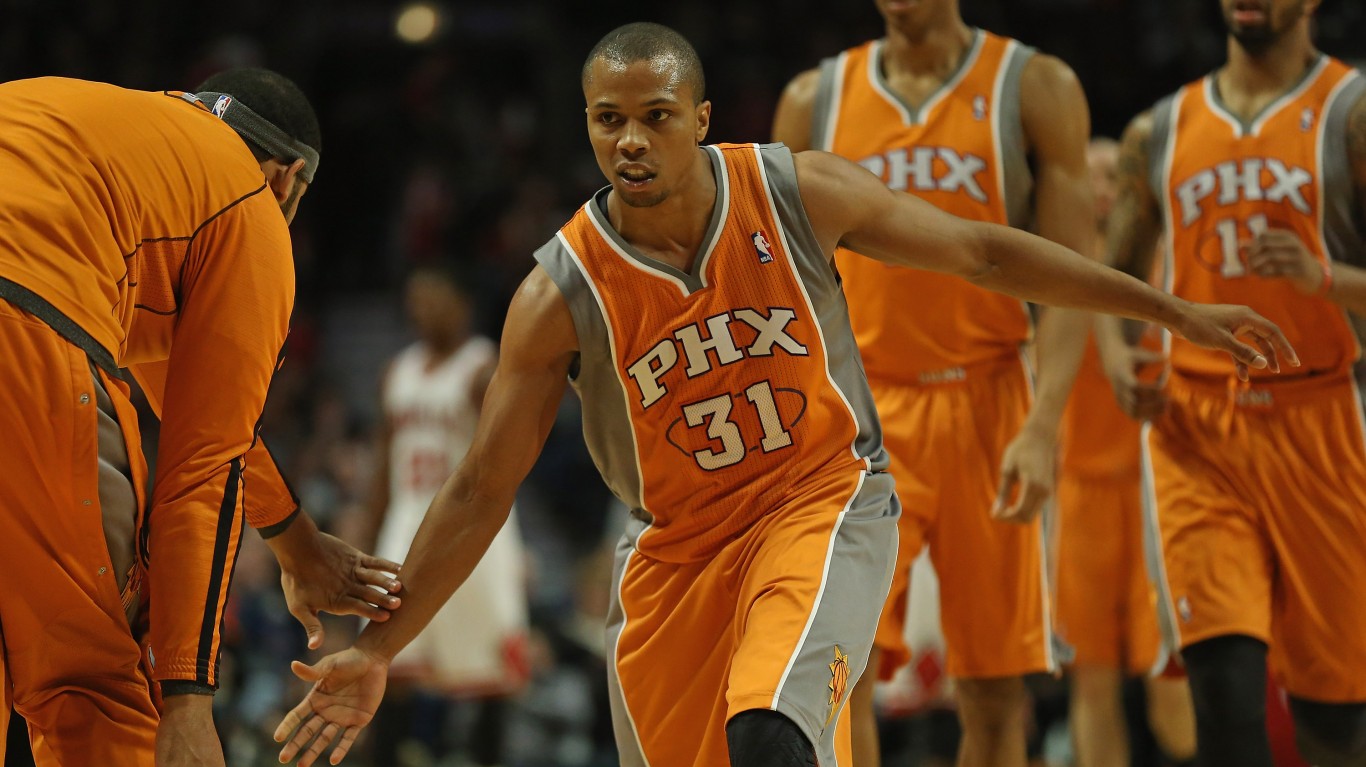
13. Sebastian Telfair
> Career: 2005-2015
> Position, team(s): Point guard: Portland Trail Blazers, Minnesota Timberwolves
> League: NBA
After being drafted 13th overall in 2004 by the Portland Trail Blazers, guard Sebastian Telfair bounced around to seven other franchises in his 10 NBA seasons. Telfair averaged 7.4 points and 3.5 assists per game and shot only 39.0% from the field for his career.
Telfair posted negative offensive and defensive box plus/minus for his career and had a negative overall value over replacement players — meaning that he contributed less to his team’s success than a typical backup in the NBA.
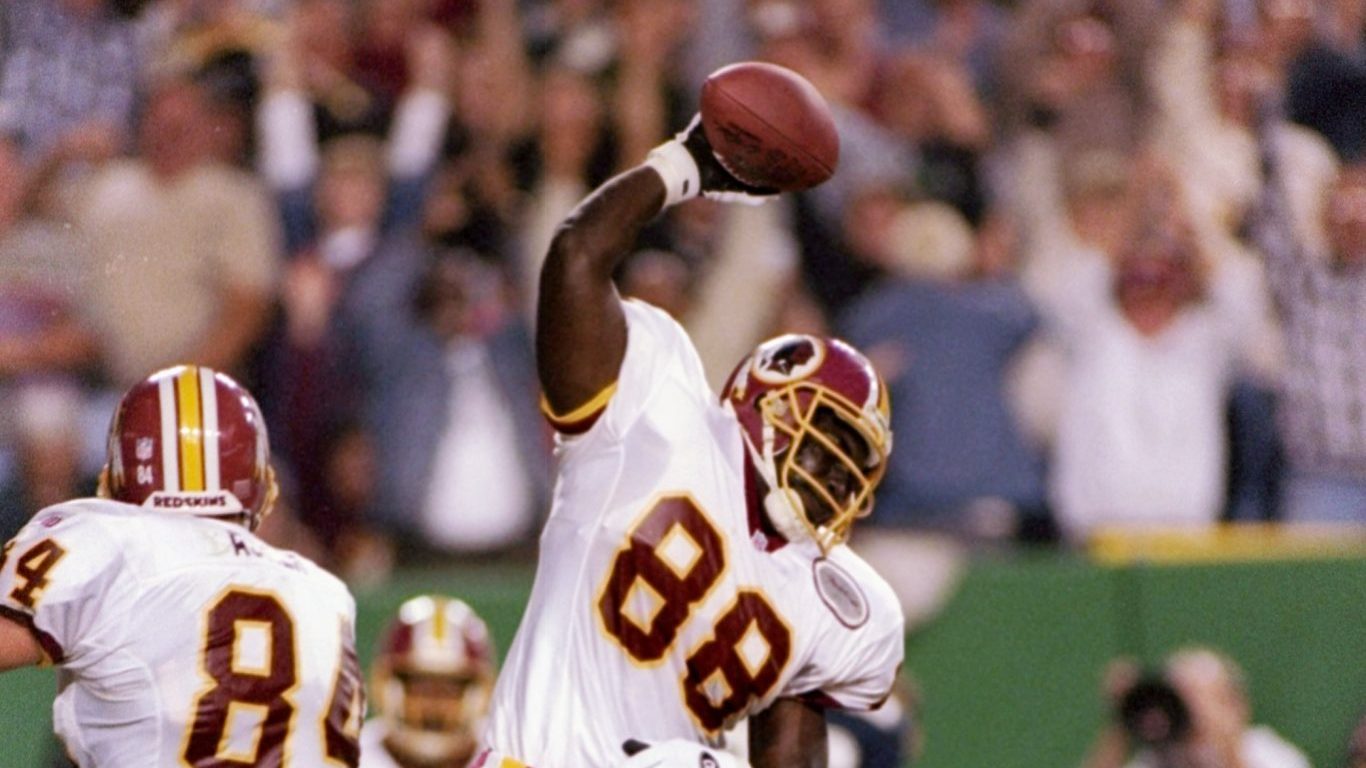
12. James Jenkins
> Career: 1991-2000
> Position, team(s): Tight end: Washington Football Team
> League: NFL
James Jenkins was an undrafted free agent out of Rutgers, but he managed to keep his NFL career going for a decade, serving as a blocking tight end for the Washington Football Team. He was a member of Washington’s 1992 Super Bowl winning team, though he played sparingly during that season, appearing in five games. In his 10 years in the NFL, Jenkins caught 15 passes for 114 total yards.
[in-text-ad-2]
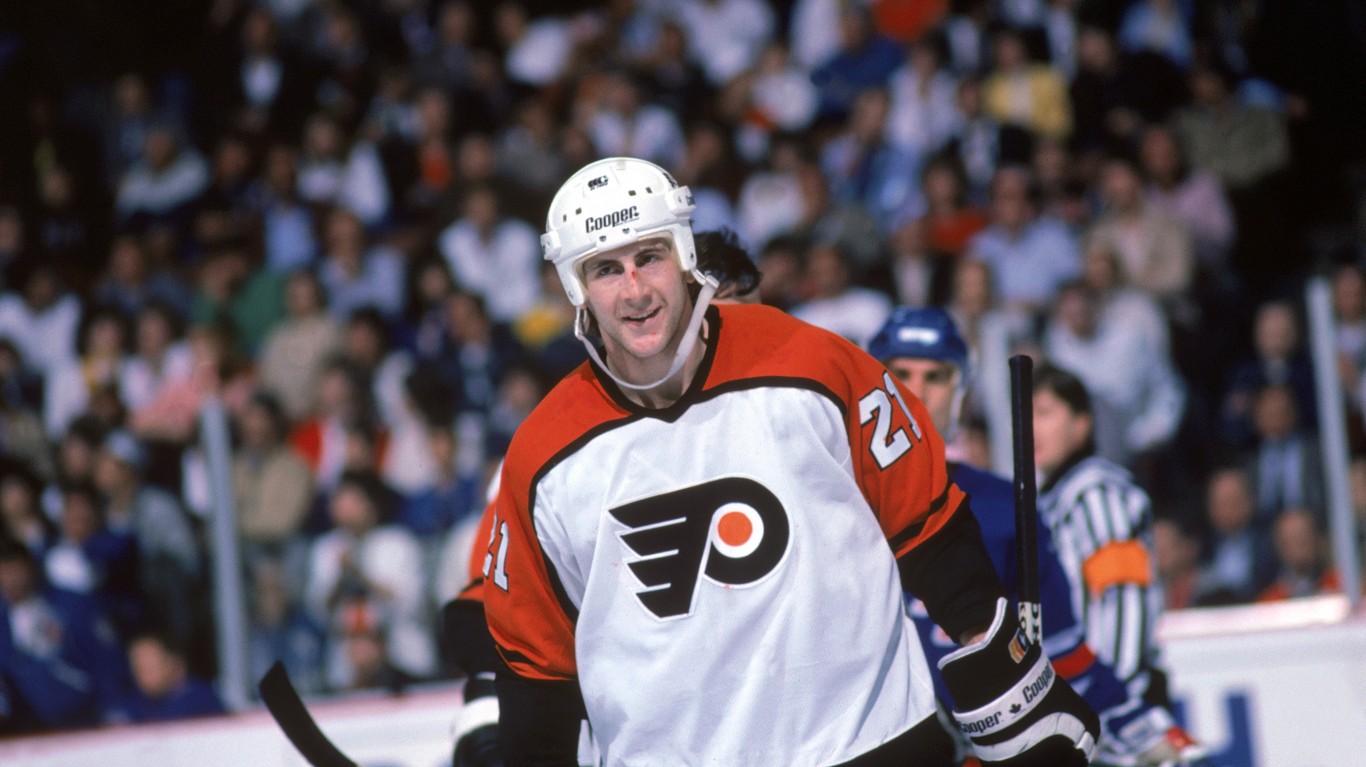
11. Dave Brown
> Career: 1982-1996
> Position, team(s): Right Winger: Philadelphia Flyers, Edmonton Oilers, San Jose Sharks
> League: NHL
Right winger Dave Brown played 14 NHL seasons — 11 with the Philadelphia Flyers, three with the Edmonton Oilers, and one final year with the San Jose Sharks. In 729 career games, he recorded just 45 goals and 52 assists, or 0.06 goals and 0.07 assists per game. Brown was a member of Edmonton’s 1990 Stanley Cup winning team, though he appeared in just three games during the postseason run.
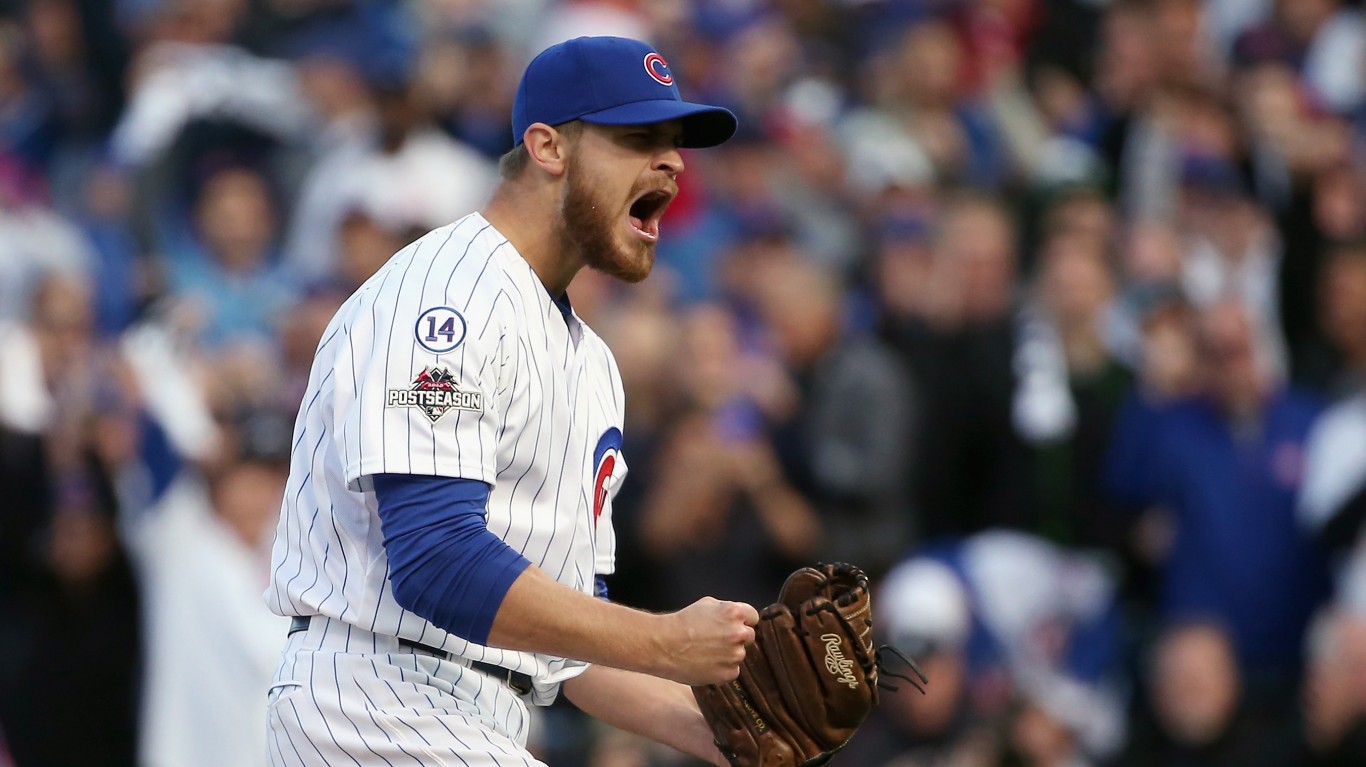
10. Justin Grimm
> Career: 2012-present
> Position, team(s): Pitcher: Texas Rangers, Chicago Cubs
> League: MLB
Justin Grimm made his MLB debut with the Texas Rangers in 2012. After struggling with Texas, Grimm was traded to the Chicago Cubs during the 2013 season. It appeared he was on the right track, posting a 3.78 ERA in 2014 and a 1.99 ERA the year after, but it more than doubled, up to 4.10 during the Cubs’ 2016 World Series season. Grimm’s ERA ballooned further, up to 5.53 in 2017, and he was released after the season.
In 2018, Grimm allowed 20 earned runs in 17.1 innings between the Royals and Mariners and then spent all of 2019 in the minor leagues. He returned to the majors briefly in 2020, allowing nine runs in 4.2 innings for Milwaukee. As of the 2021 season, Grimm is with the AAA affiliate of the Seattle Mariners.
[in-text-ad]
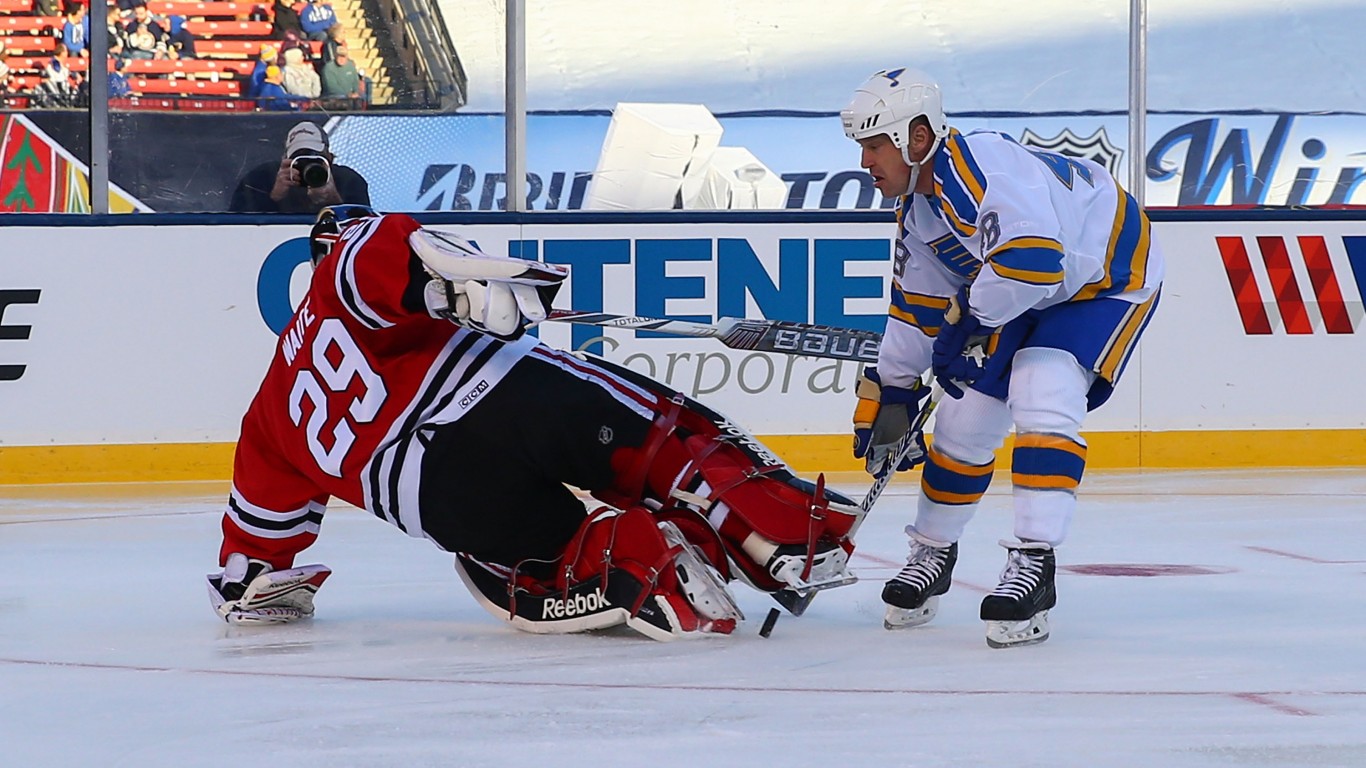
9. Jimmy Waite
> Career: 1988-1999
> Position, team(s): Goaltender: Chicago Blackhawks, San Jose Sharks, Phoenix Coyotes
> League: NHL
Backup goaltender Jimmy Waite played in the NHL for 11 seasons, first suiting up for the Chicago Blackhawks at age 19. The eighth overall selection in the 1987 NHL Draft, Waite was never able to earn a starting job. He never played more than 20 games in a season for Chicago, San Jose, or Phoenix. In his 106 career games, Waite saved just 87.1% of the shots he faced, allowing 3.35 goals per game.

8. Dan Meyer
> Career: 1974-1985
> Position, team(s): Infielder/Outfielder: Detroit Tigers, Oakland A’s, Seattle Mariners
> League: MLB
Dan Meyer played 12 years in the MLB with the Detroit Tigers, Oakland A’s, and Seattle Mariners. Meyer was a utility player, mostly lining up at first base, third base, and left field. Though he was a solid first baseman, his fielding percentage was well below league averages at every other position. He was also a streaky batter, hitting .227 one season, before batting .278 the next.
Overall, Meyer posted a -6.4 wins above replacement for his entire career, meaning he cost his team six to seven wins compared to the level of production a replacement level player could have provided.
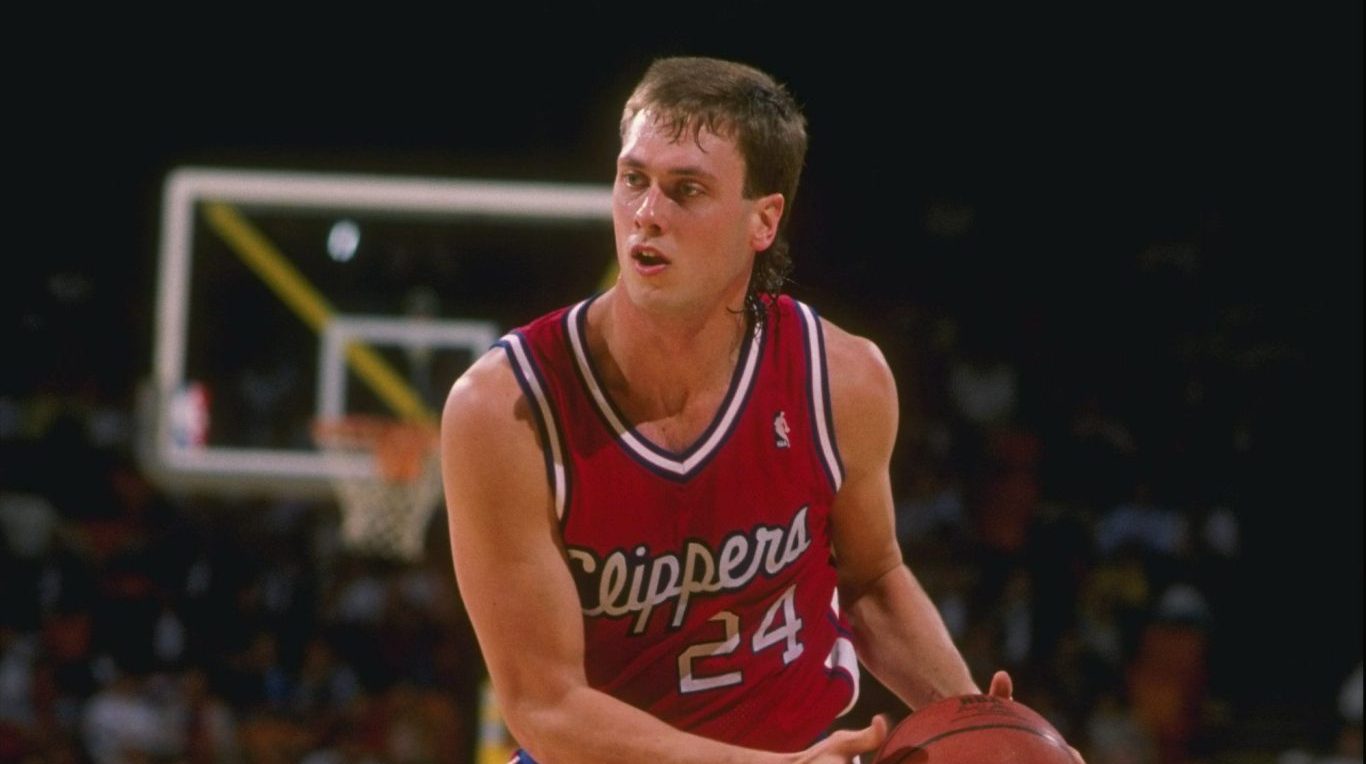
7. Joe Wolf
> Career: 1988-1999
> Position, team(s): Center: Denver Nuggets, Los Angeles Clippers, Charlotte Hornets
> League: NBA
Joe Wolf played center and power forward in the NBA for 11 seasons. He spent all or part of three seasons each with the Denver Nuggets, Los Angeles Clippers, and Charlotte Hornets, as well as stints in Orlando, Boston, Milwaukee, and Portland. Though his defense was solid, Wolf was an offensive liability, averaging just 4.2 points per game for his career on 42.3% shooting, a low shooting percentage, particularly for a center.
[in-text-ad-2]
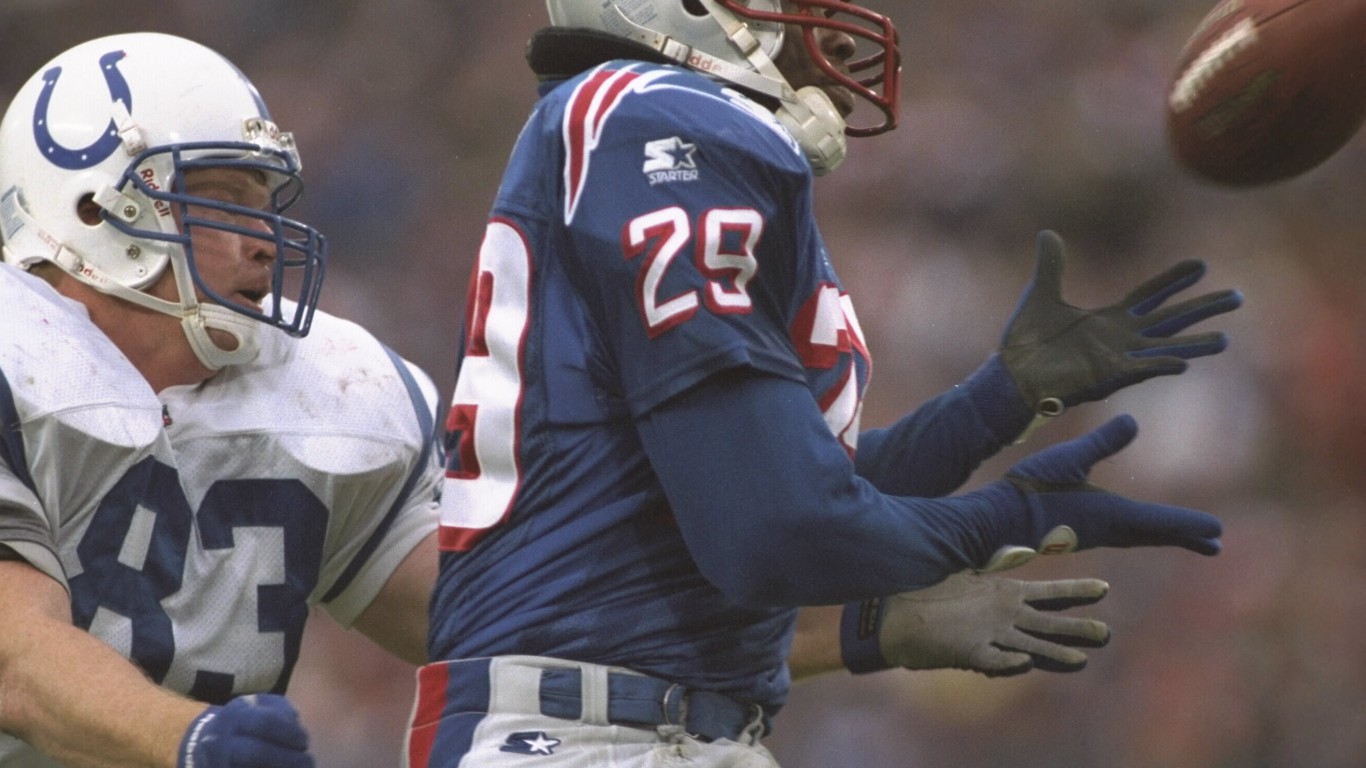
6. Bradford Banta
> Career: 1994-2004
> Position, team(s): Tight end: Indianapolis Colts, Detroit Lions, New York Jets
> League: NFL
Though tight ends are now regularly featured as offensive weapons, some, like Bradford Banta, spend most of their time blocking. Banta, a fourth-round draft pick of the Indianapolis Colts in 1994, spent 11 NFL seasons as a tight end, center, and special teamer. In his 156 games for the Colts, Detroit Lions, New York Jets, and Buffalo Bills, Banta recorded two career catches for 13 yards.
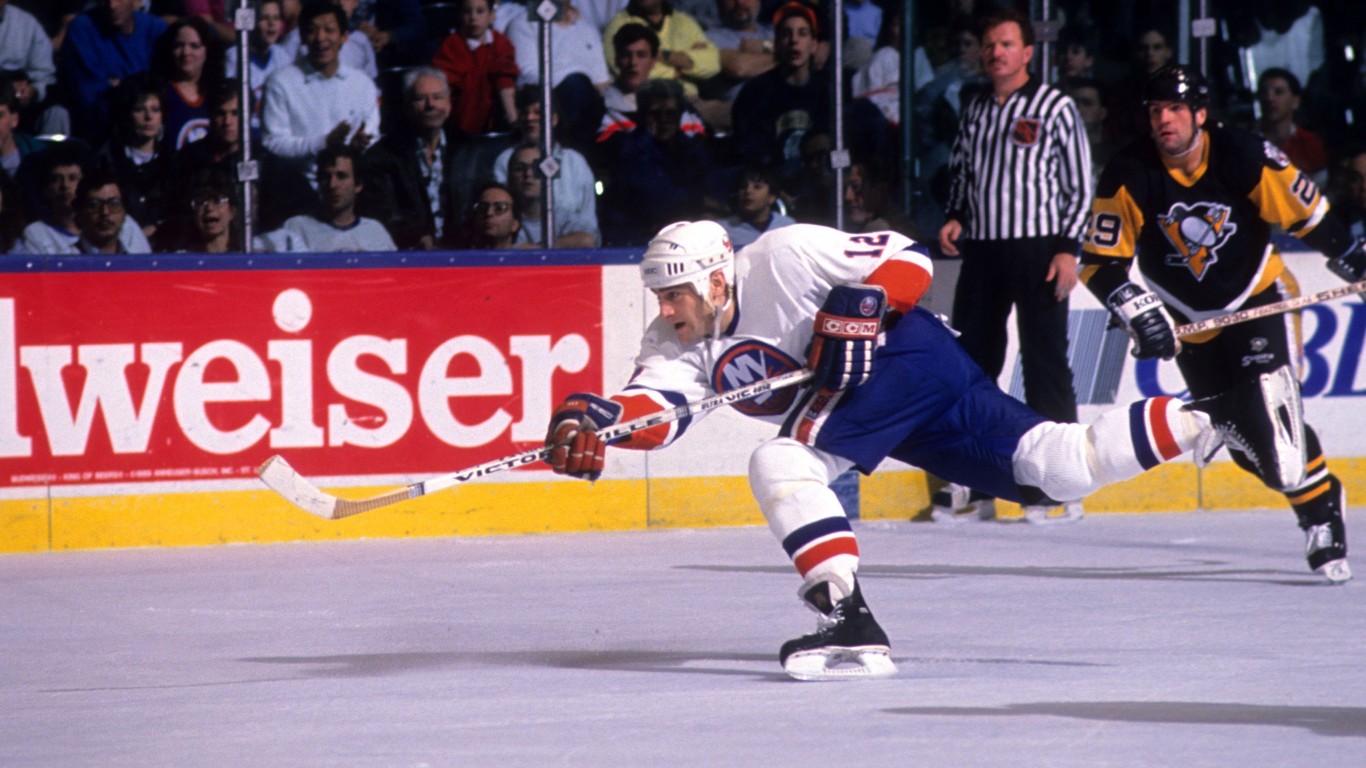
5. Mick Vukota
> Career: 1987-1998
> Position, team(s): Right Winger: New York Islanders
> League: NHL
Right winger Mick Vukota spent 10 of his 11 NHL seasons with the New York Islanders, before splitting his final season between the Tampa Bay Lightning and Montreal Canadiens. Vukota was never much of an offensive threat, scoring on just 6.5% of his shots (for context, league average was 9.7% for the 2020-2021 NHL season). Vukota scored just 17 goals and registered 29 assists in 573 career games.
[in-text-ad]
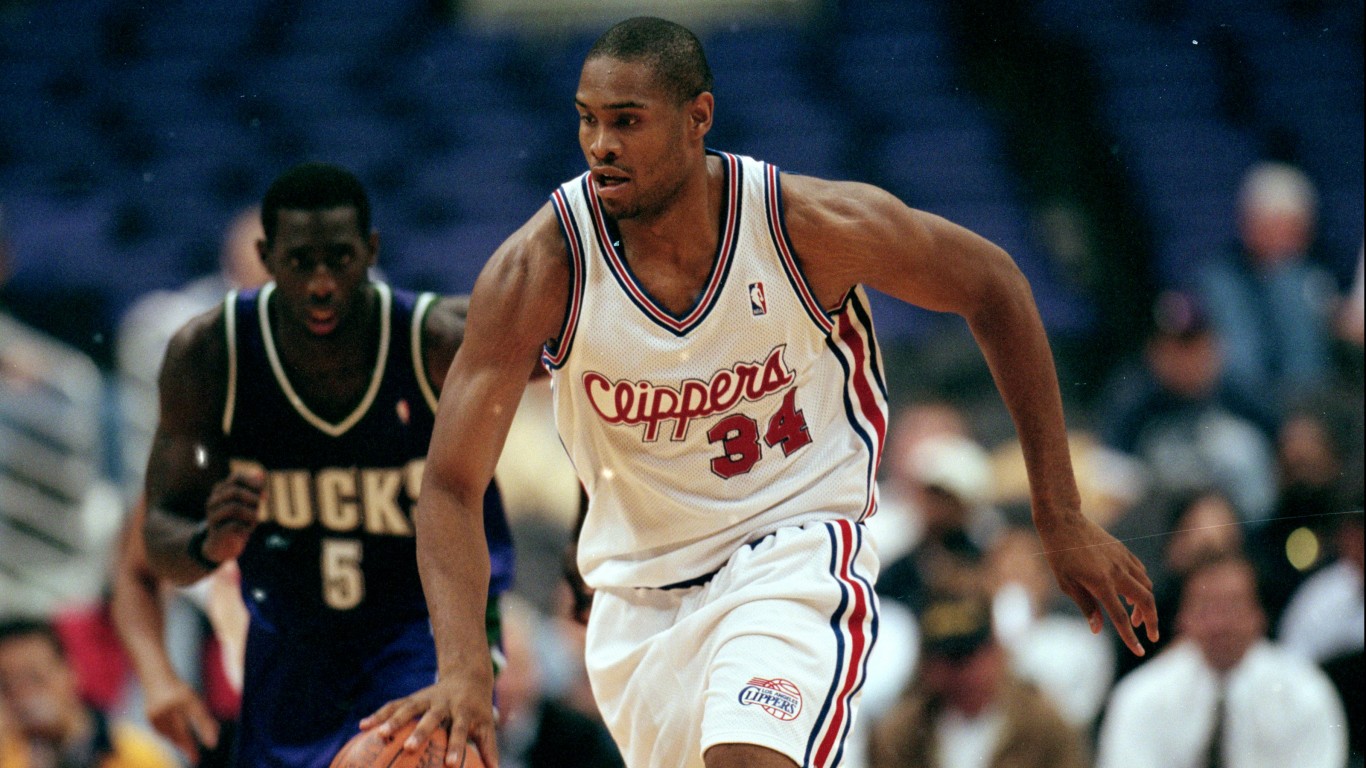
4. Michael Olowokandi
> Career: 1999-2007
> Position, team(s): Center: Los Angeles Clippers, Minnesota Timberwolves
> League: NBA
Michael Olowokandi was the first overall pick in the 1998 NBA draft, ahead of legends like Vince Carter, Dirk Nowitzki, and Paul Pierce. He could never live up to expectations, posting a negative value over replacement players over 500 career games in nine seasons. Olowokandi shot just 43.5% from the field for his career.
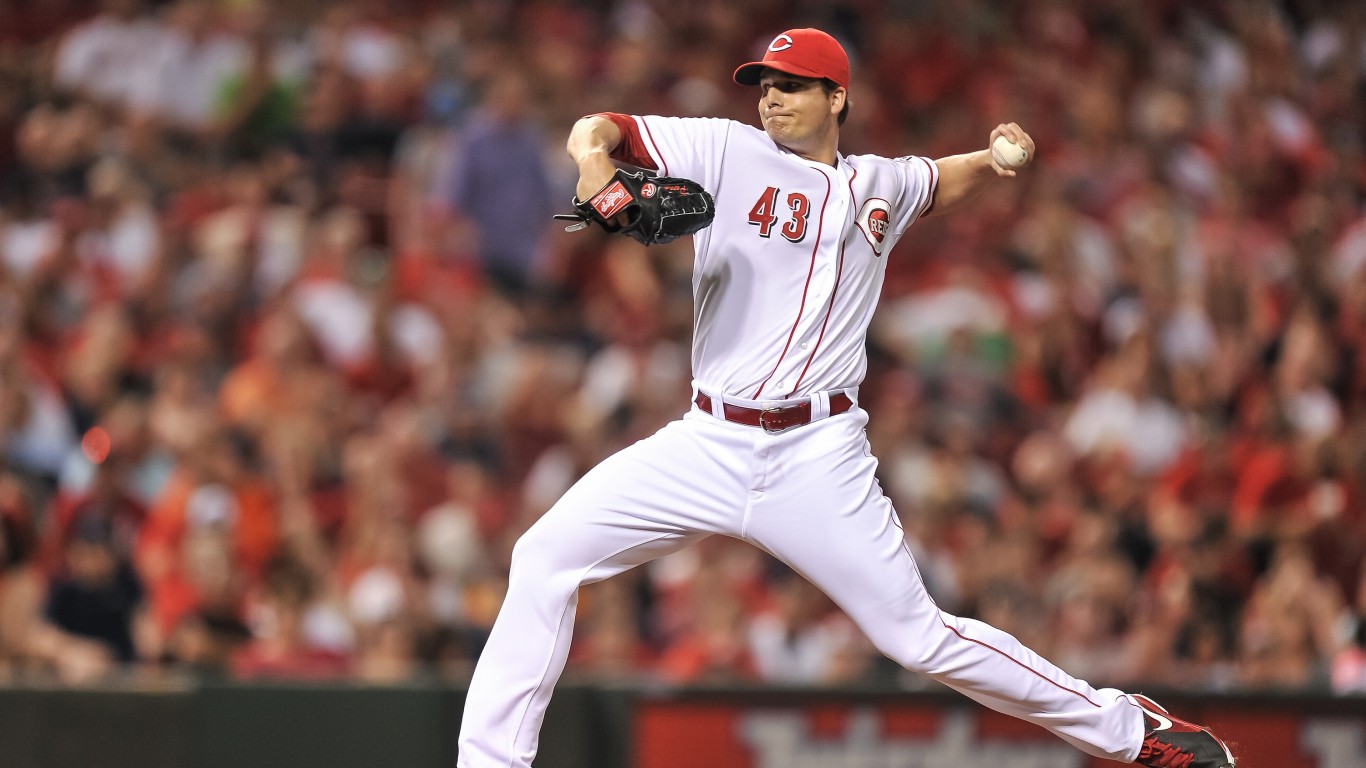
3. Manny Parra
> Career: 2007-2015
> Position, team(s): Pitcher: Milwaukee Brewers, Cincinnati Reds
> League: MLB
Lefty pitcher Manny Parra played eight MLB seasons, pitching in over 300 games for the Milwaukee Brewers and Cincinnati Reds. In his four full seasons in Milwaukee, Parra’s ERA was never under 4.00 for a full season.
Initially a starting pitcher, Parra was moved to the bullpen, but he continued to struggle and spent 2011 in the minors. After posting a 5.06 ERA in 2012, he was a free agent and signed with the Reds. In 150 games in Cincinnati, Parra had a 3.91 ERA, ending his career with an overall ERA of 4.90 and a 29-41 record.
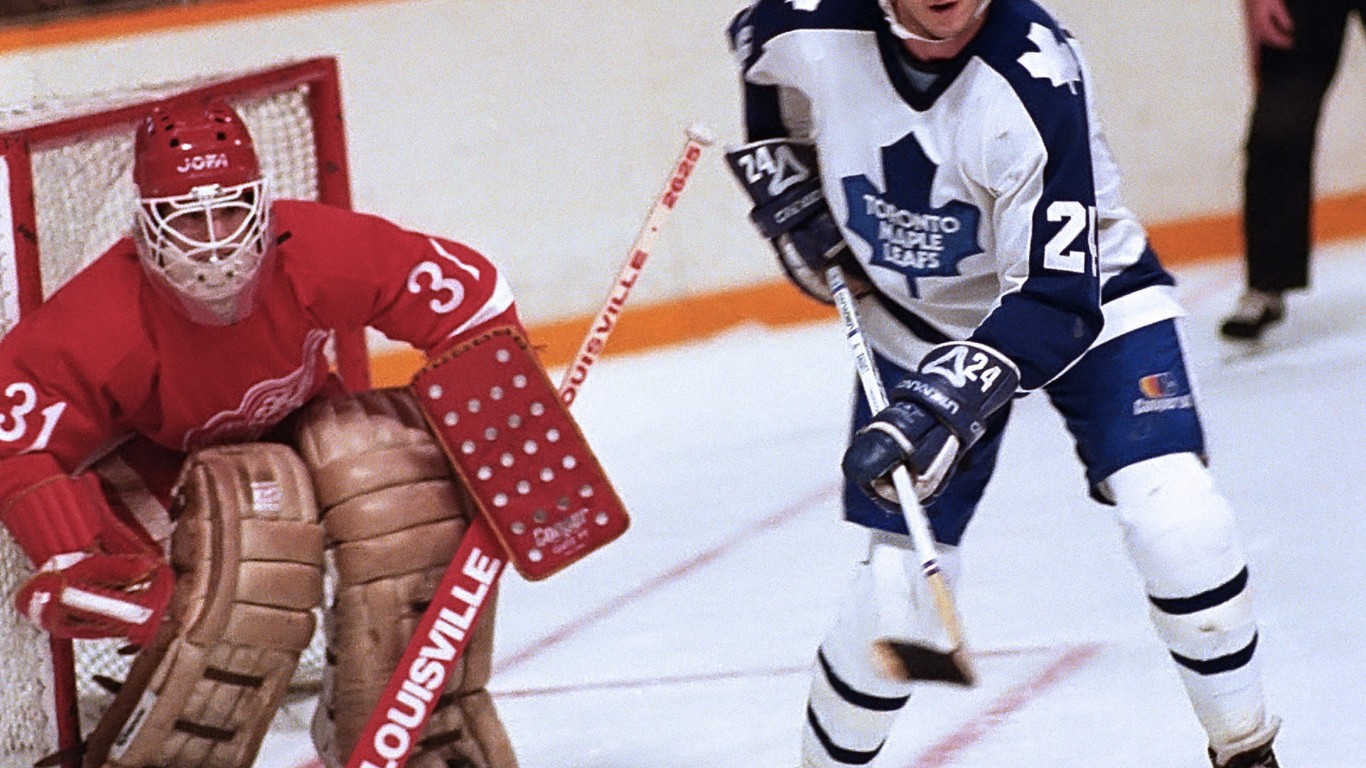
2. Corrado Micalef
> Career: 1981-1986
> Position, team(s): Goaltender: Detroit Red Wings
> League: NHL
Corrado Micalef played goaltender for the Detroit Red Wings for over 100 games from 1981-1986. In that time, he allowed 4.25 goals per game and only managed two shutouts. He only managed to save 85.6% of the shots that came his way — most goalies have save percentages of over 90%. Detroit lost more than twice as many games as they won with Micalef in net, posting a 26-59 record.
[in-text-ad-2]
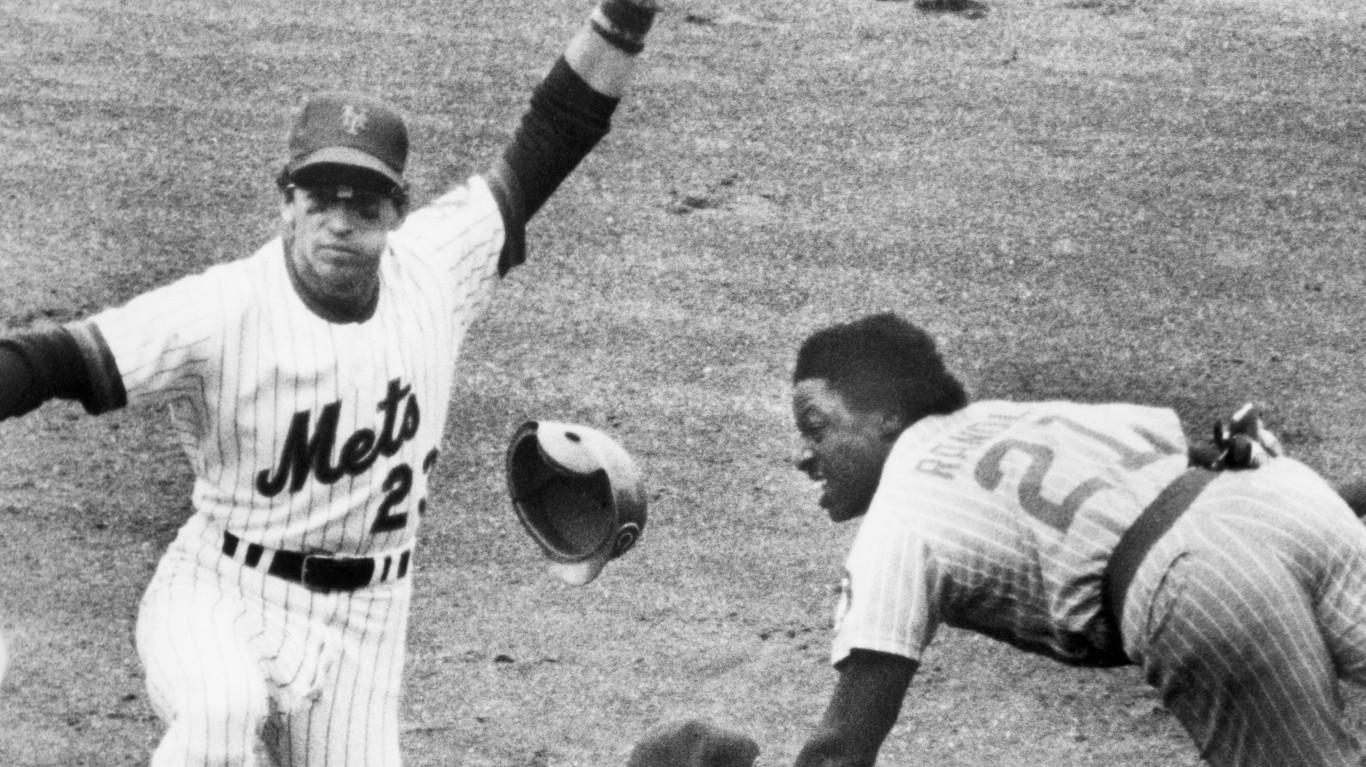
1. Doug Flynn
> Career: 1975-1985
> Position, team(s): Infielder: New York Mets, Montreal Expos, Cincinnati Reds
> League: MLB
Doug Flynn played 11 MLB seasons between five different teams, most notably the New York Mets, Montreal Expos, and Cincinnati Reds. Though his .238 lifetime batting average is respectable, Flynn seldom walked and scarcely hit for power, making him an offensive liability. His lifetime slugging percentage is under .300, and he had just seven home runs in over 4,000 plate appearances.
Flynn was a good defender and was able to play second base, third base, and shortstop, likely helping to keep his career going despite his offensive struggles. Though he was a member of the 1976 Cincinnati Reds World Series winning team, he did not play a game in the World Series itself.
Methodology:
To determine the worst athletes with the longest careers, 24/7 Tempo reviewed data from the Sports Reference family of sites on veteran players in the NFL, NHL, MLB, and NBA who played hundreds of games with the lowest overall contribution to their teams’ success.
We considered NFL players who played in over 100 games, NHL skaters who played in over 500 games, NHL goaltenders who played in over 100 games, MLB pitchers who appeared in over 300 games, MLB batters who played in over 1,000 games, and NBA players who appeared in at least 500 games. Players who earned an All-Star or All-Pro designation were not considered.
Players were selected based on their overall contribution to their teams, as measured by approximate value for NFL players, wins above replacement for MLB players, point shares for NHL players, and win shares for NBA players. Only players who appeared during the modern eras of these leagues were considered.
100 Million Americans Are Missing This Crucial Retirement Tool
The thought of burdening your family with a financial disaster is most Americans’ nightmare. However, recent studies show that over 100 million Americans still don’t have proper life insurance in the event they pass away.
Life insurance can bring peace of mind – ensuring your loved ones are safeguarded against unforeseen expenses and debts. With premiums often lower than expected and a variety of plans tailored to different life stages and health conditions, securing a policy is more accessible than ever.
A quick, no-obligation quote can provide valuable insight into what’s available and what might best suit your family’s needs. Life insurance is a simple step you can take today to help secure peace of mind for your loved ones tomorrow.
Click here to learn how to get a quote in just a few minutes.
Thank you for reading! Have some feedback for us?
Contact the 24/7 Wall St. editorial team.
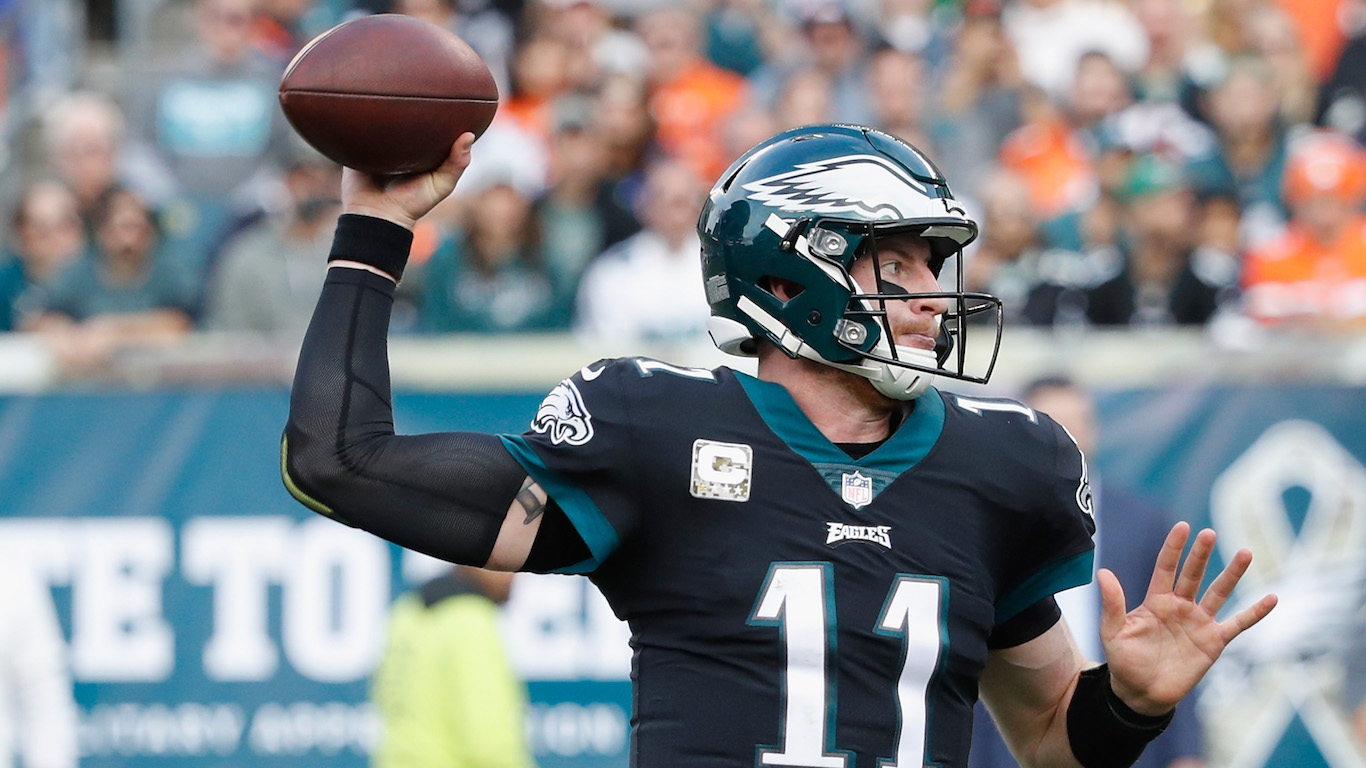 24/7 Wall St.
24/7 Wall St. 24/7 Wall St.
24/7 Wall St.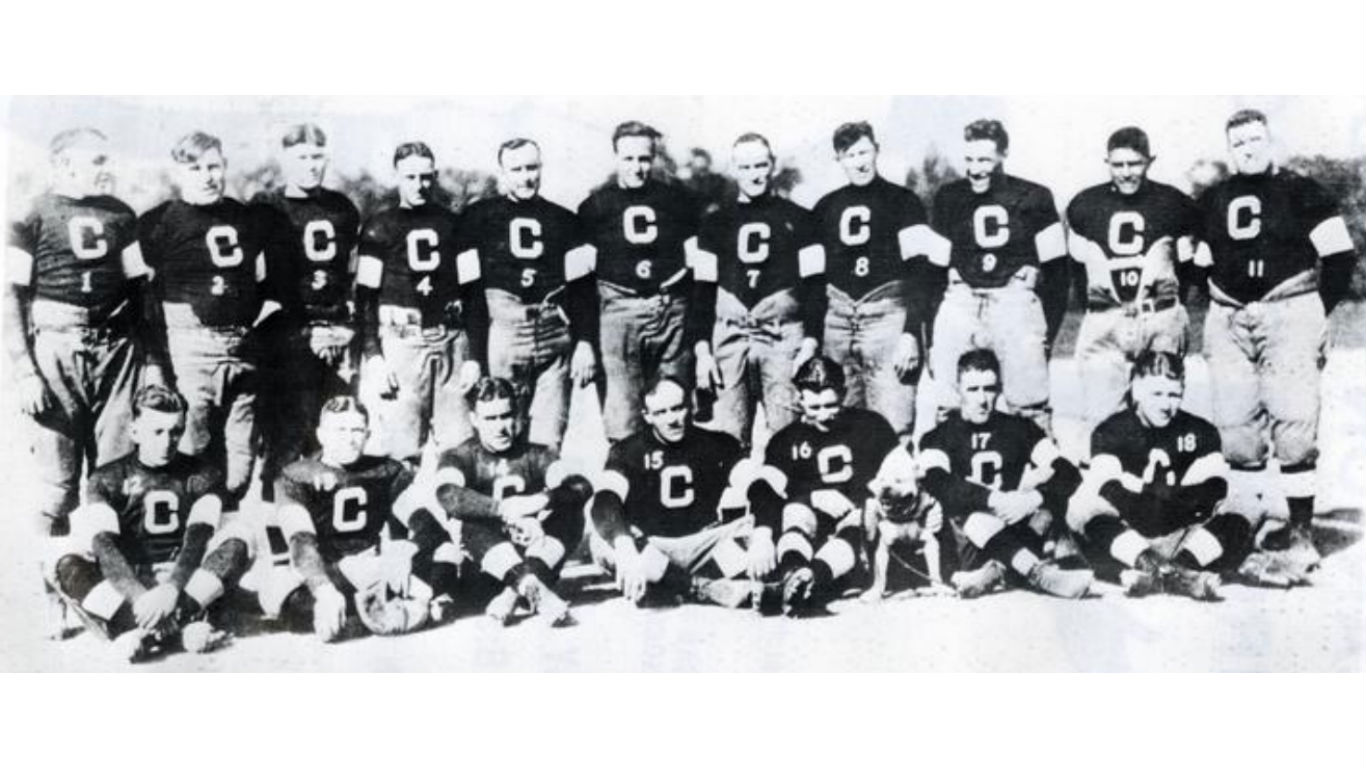 24/7 Wall St.
24/7 Wall St.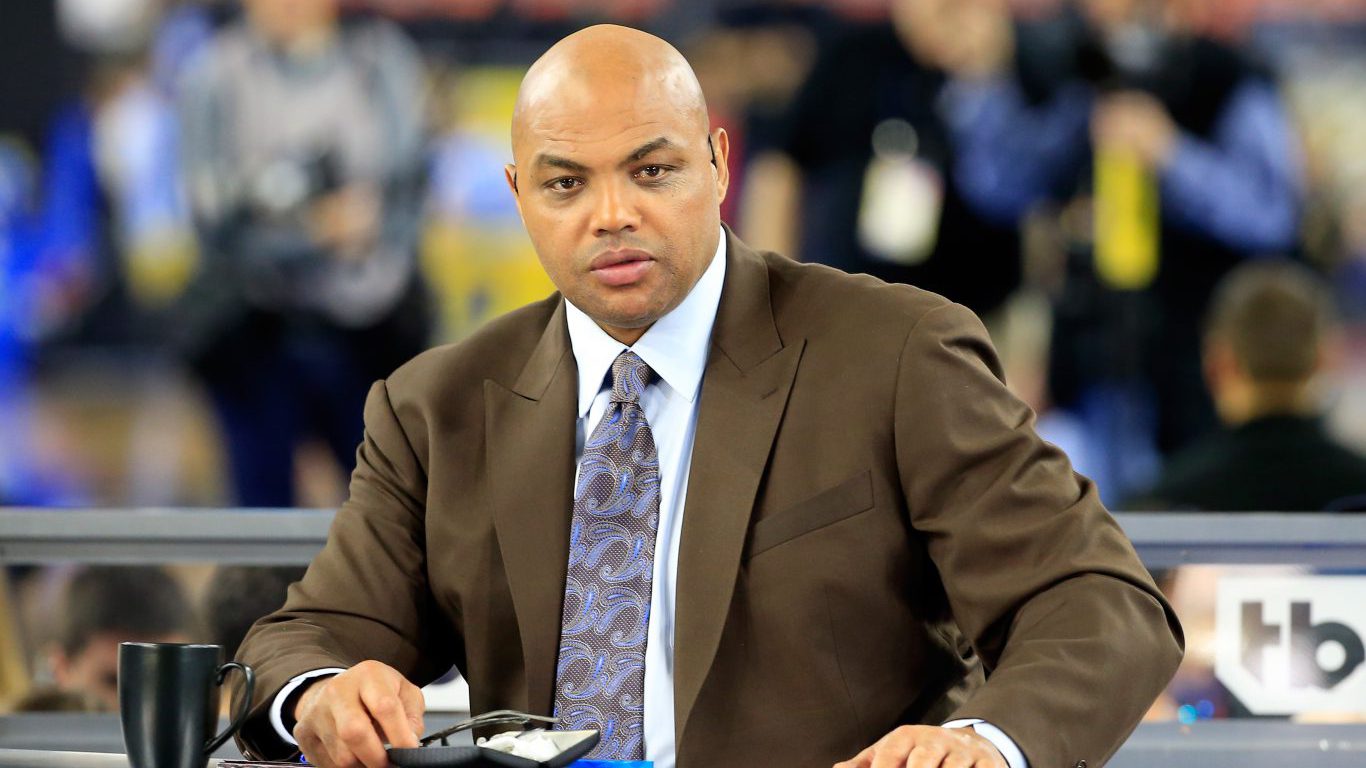 24/7 Wall St.
24/7 Wall St.
